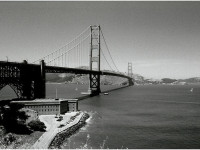Oscar Niemeyer – The Visionary Architect of Brasilia
On December 15, 1907, famous Brazilian architect Oscar Niemeyer, who is considered to be one of the key figures in the development of modern architecture was born. Niemeyer was best known for his design of civic buildings for Brasília, a planned city which became Brazil‘s capital in 1960, as well as his collaboration with other architects on the United Nations Headquarters in New York City. “I deliberately disregarded the right angle and…
Read more











